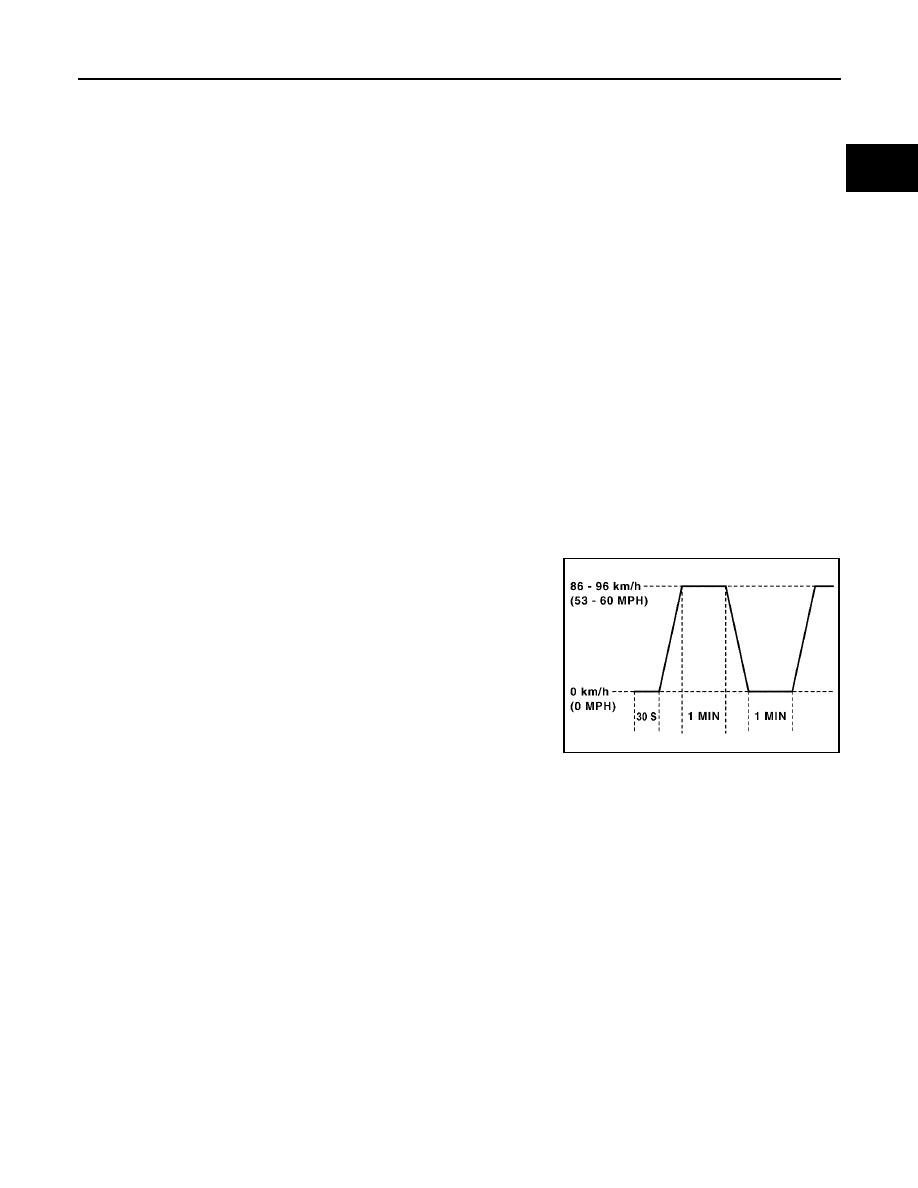Nissan Pathfinder (2005 year). Manual - part 151

ON BOARD DIAGNOSTIC (OBD) SYSTEM
EC-59
C
D
E
F
G
H
I
J
K
L
M
A
EC
2005 Pathfinder
●
The time required for each diagnosis varies with road surface conditions, weather, altitude, individual driv-
ing habits, etc.
Zone A refers to the range where the time, required for the diagnosis under normal conditions*, is the
shortest.
Zone B refers to the range where the diagnosis can still be performed if the diagnosis is not completed
within zone A.
*: Normal conditions refer to the following:
●
Sea level
●
Flat road
●
Ambient air temperature: 20 - 30
°
C (68 - 86
°
F)
●
Diagnosis is performed as quickly as possible under normal conditions.
Under different conditions [For example: ambient air temperature other than 20 - 30
°
C (68 - 86
°
F)], diag-
nosis may also be performed.
Pattern 1:
●
The engine is started at the engine coolant temperature of
−
10 to 35
°
C (14 to 95
°
F)
(where the voltage between the ECM terminal 73 and ground is 3.0 - 4.3V).
●
The engine must be operated at idle speed until the engine coolant temperature is greater than
70
°
C (158
°
F) (where the voltage between the ECM terminal 73 and ground is lower than 1.4V).
●
The engine is started at the fuel tank temperature of warmer than 0
°
C (32
°
F) (where the voltage
between the ECM terminal 107 and ground is less than 4.1V).
Pattern 2:
●
When steady-state driving is performed again even after it is interrupted, each diagnosis can be con-
ducted. In this case, the time required for diagnosis may be extended.
Pattern 3:
●
Operate vehicle following the driving pattern shown in the figure.
●
replace the accelerator pedal during decelerating vehicle speed
from 90km/h (56MPH) to 0km/h (0MPH).
Pattern 4:
●
The accelerator pedal must be held very steady during steady-
state driving.
●
If the accelerator pedal is moved, the test must be conducted all
over again.
*1: Depress the accelerator pedal until vehicle speed is 90 km/h (56
MPH), then release the accelerator pedal and keep it released for
more than 10 seconds. Depress the accelerator pedal until vehicle
speed is 90 km/h (56 MPH) again.
*2: Checking the vehicle speed with GST is advised.
Suggested Transmission Gear Position
Set the selector lever in the D position.
TEST VALUE AND TEST LIMIT (GST ONLY — NOT APPLICABLE TO CONSULT-II)
The following is the information specified in Service $06 of SAE J1979.
The test value is a parameter used to determine whether a system/circuit diagnostic test is OK or NG while
being monitored by the ECM during self-diagnosis. The test limit is a reference value which is specified as the
maximum or minimum value and is compared with the test value being monitored.
These data (test value and test limit) are specified by Test ID (TID) and Component ID (CID) and can be dis-
played on the GST screen.
PBIB2244E